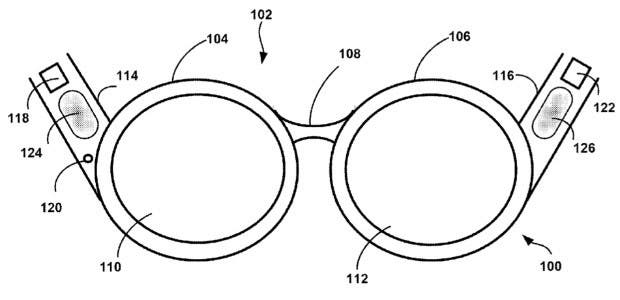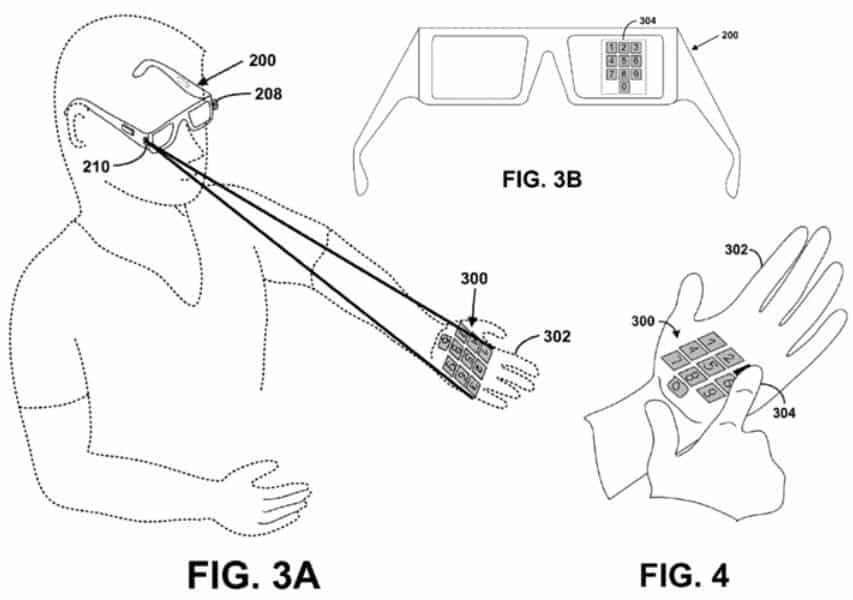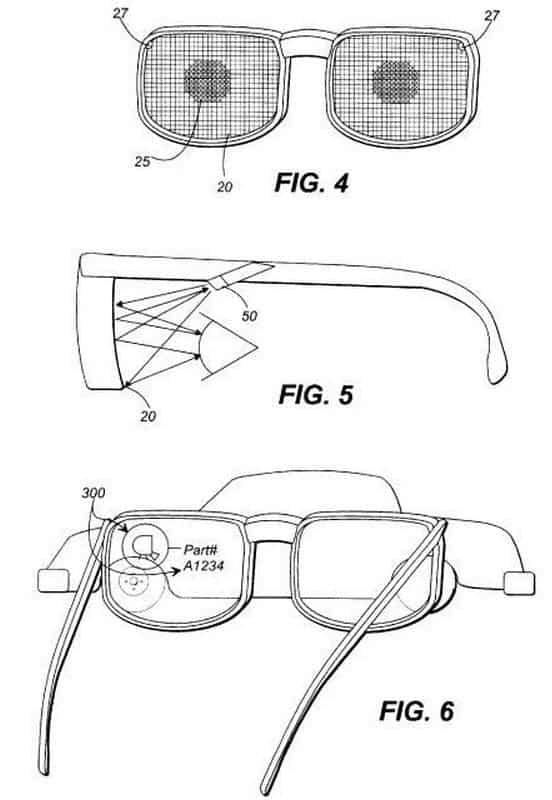For a few years now, Google has been developing what it claims to be the next generation in user interface, set to revolutionize the way to interact with the world. The project is called Google Glass and apart from a few incredible demos, these is still very little known about the product, apart from the fact that it looks like a ordinary pair of glasses, but with some extraordinary features like augmented reality and live high resolution camera feed.

Recently, the search giant, which let’s face it has long made the jump from search into virtually every field of high-end technology, applied for patents for its heads-up, offering a set of new insights into what this device will be capable of doing.
One of its most impressive features is something called bone conduction audio. What this means is that the head-mounted display can be configured to provide indirect bone-conduction audio through a vibration transducer that is configured to vibrate at least a portion of the head-mounted display based on the audio signal. This essentially means that by wearing Google Glass you could have conversations that no one can overhear.
Babik Parviz is the head of the Google Glass project and he revealed a few facts about the invention earlier this month to Elise Ackerman of IEEE Spectrum.
“We wanted to have a device that would do two things that we think would be useful for a lot of people,” Parviz said. “One is to have a device that would allow for pictorial communications, to allow people to connect to others with images and video…we wanted to have a device that would see the world through your eyes and allow you to share that view with other people.”
“The second big goal was to have a technology that would allow people to access information very, very quickly,” he continued, “So when you have a question, you can very rapidly get to the answer.”

Another awesome feature is its projection capabilities. Fitted with both a projector and a camera in the headset, Google Glass can project an interface on any kind of surface, including the wearer’s hands. Want to type a phone number? Just beam a beautiful keyboard on your hand and type away. The camera captures the activity on the interfaced surface and translates the actions.

Also, as I said earlier, Google Glass is supposedly fully augmentative. So, in theory, at least according to the scarce info we got from this recent file for a patent, you could look at a car, as the illustration above suggests, and have things like specs or certain mechanical parts presented directly through a display in your headset. Yeah, they’re really pushing it this time. Besides the fact that Google is really secretive about the project, they’re constantly tweaking its features, so until it’s nearly really for release, things are on a need to know basis only.
“We haven’t actually talked about specific features,” Parviz claims. “We have mentioned some basic capabilities, like taking a picture and sharing it. We are experimenting with a lot of things. The feature set for the device is not set yet. It is still in flux.”
Check out the Google Glass patent here. Below is a video presentation of Google Glass by Sergey Brin himself, which however doesn’t highlight any of the fantastic features mentioned in this article, but which still makes for a great show. Hint: it includes skydiving and mountain biking.
Was this helpful?



